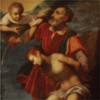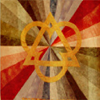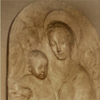









ALL CHRISTIANS are part of the Christian story. The seasons of the church year help give us a way to experience how this is so.
The Christian Church year focuses on the events in life and ministry of Jesus. The sequence of festivals from Advent to Resurrection Sunday becomes an annual spiritual journey for worshipers as they kneel at the manger, listen on a hillside, walk the streets of Jerusalem, hear the roar of the mob, stand beneath the cross, and witness the resurrection!
The rest of the church year provides time to reflect on the meaning of the coming of Jesus and his commission to his people to be a light to the world. During these times the Bible readings are chosen for their appropriateness to the season. During the rest of the year - the season after Epiphany and the long season after Pentecost (except for a few special Sundays) - the New Testament is read sequentially from Sunday to Sunday. The Old Testament lesson corresponds in theme with one of the New Testament readings.
ADVENT, which begins four Sundays prior to Christmas, is a time of expectant waiting and preparation for the celebration of the Nativity of Jesus. The Advent wreath symbolizes the passage of the four weeks of Advent. Beginning with the First Sunday of Advent, a candle is lit and an additional candle is lit during each subsequent week until, by the last Sunday before Christmas, all four candles are lit. A fifth "Christ" candle is lit at Christmas. Traditionally, vestments are purple - which respresents penitence or expectation - or blue, which represents Mary.
The CHRISTMAS season immediately follows the season of Advent. The traditional Twelve Days of Christmas begin with Christmas Eve and continue until the feast of Epiphany. The actual Christmas season continues until the Feast of the Baptism of Christ, which is celebrated on the Sunday after January 6. Traditionally, vestments are white (or sometimes gold), which symbolizes joy, purity, and truth.
The FEAST OF THE EPIPHANY, the 12th day after Christmas, is a Christian feast day that celebrates the revelation of God in human form in the person of Jesus Christ; as well as a celebration of the visit of the three kings or wise men to the Christ Child, signifying the extension of salvation to the Gentiles. The day of the Epiphany, January 6, is celebrated using white vestments.
The SEASON AFTER THE EPIPHANY begins with the Feast of the Baptism of Christ, which is celebrated on the first Sunday after the Feast of the Epiphany on January 6 and continues through six Sundays. The last Sunday of Ephiphany marks the beginning of Lent. The vestment color for the Season After the Ephiphany is green, which symbolizes the color of all living things and God's creation.
LENT is a season for soul searching and repentance and a preparatory time for Easter, when the faithful rededicated themselves and converts are instructed in the faith and prepared for baptism. By observing the forty days of Lent, the individual Christian imitates Jesus' withdrawal into the wilderness for forty days. Ash Wednesday is the first official day of Lent. Lent continues through five Sundays, ending on Maundy Thursday. The vestment color is purple which signifies great solemnity, with connotations of both penance and royal dignity.
HOLY WEEK begins with Palm Sunday and concludes on Easter Sunday. Maundy Thursday is the day that Christ celebrated the Last Supper with His disciples, four days after His triumphal entry into Jerusalem on Palm Sunday. Good Friday, the Friday before Easter, commemorates the Passion and Death of our Lord Jesus Christ on the Cross. Holy Saturday is the last day of Holy Week, and the 40th day of the traditional fast of Lent. The Paschal Vigil begins the night of Holy Saturday, lasting until Easter morning.
The EASTER season begins on Easter Sunday and continues for seven Sundays. The entire Easter season is celebrated in white. The Feast of the Divine Mercy falls on the Octave of Easter or the Sunday immediately following Easter. It is dedicated to the devotion to the Divine Mercy promoted by St. Faustina, and is based upon an entry in St. Faustina's diary stating that anyone who participates in the Mass and receives the sacraments of confession and Eucharist on this day is assured by Jesus of full remission of sins.
PENTECOST Sunday, which marks the end of the Easter season, celebrates the descent of the Holy Spirit on the Apostles. Trinity Sunday falls one week after Pentecost Sunday, and it is the day set aside to honor the most fundamental of Christian beliefs - the Holy Trinity. The season of Pentecost begins in late May and has 27 Sundays. It concludes in late November. Red, the color of fire and blood, is the color for the day of Pentecost. The rest of the church year after Pentecost is celebrated in green.